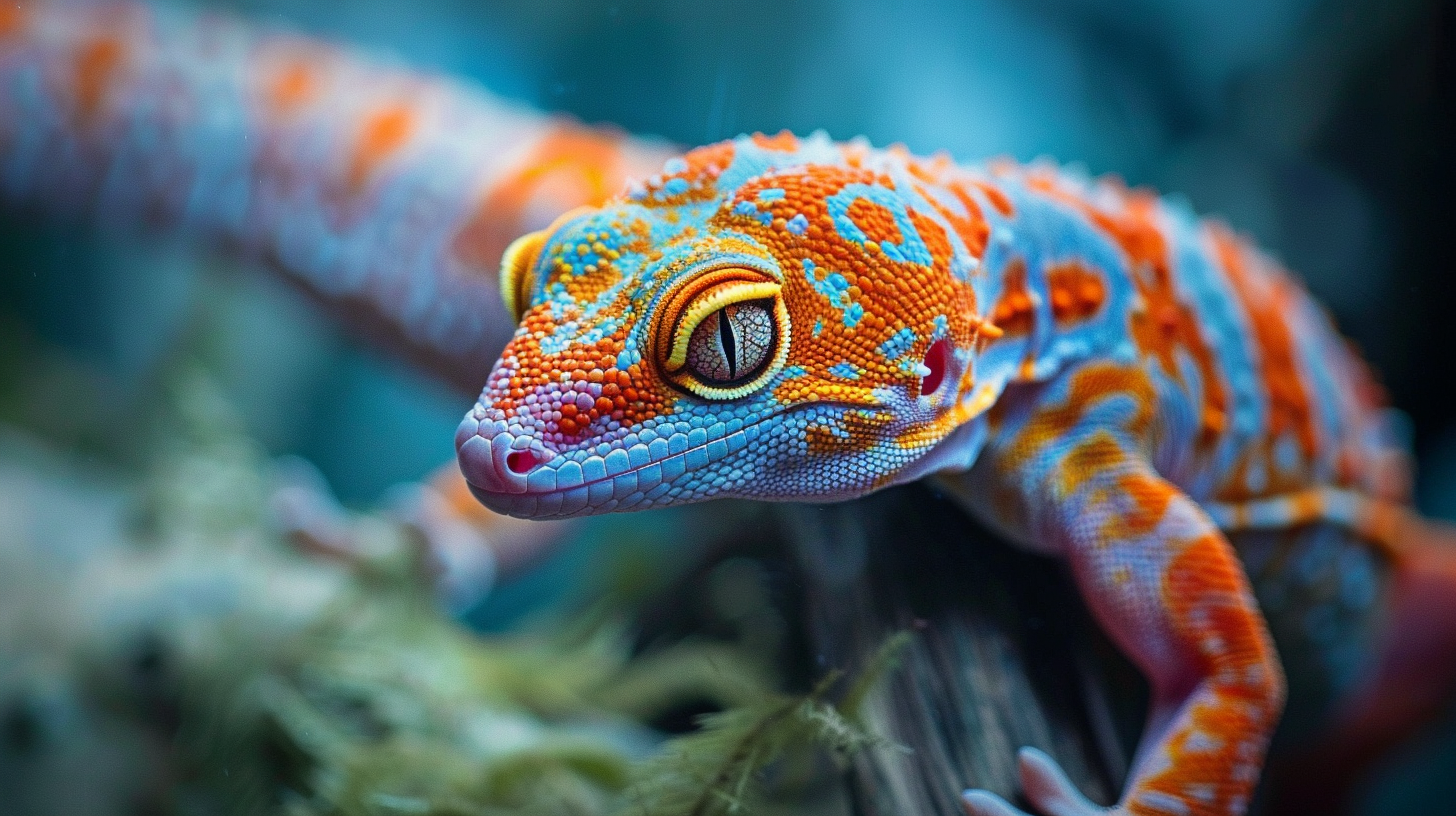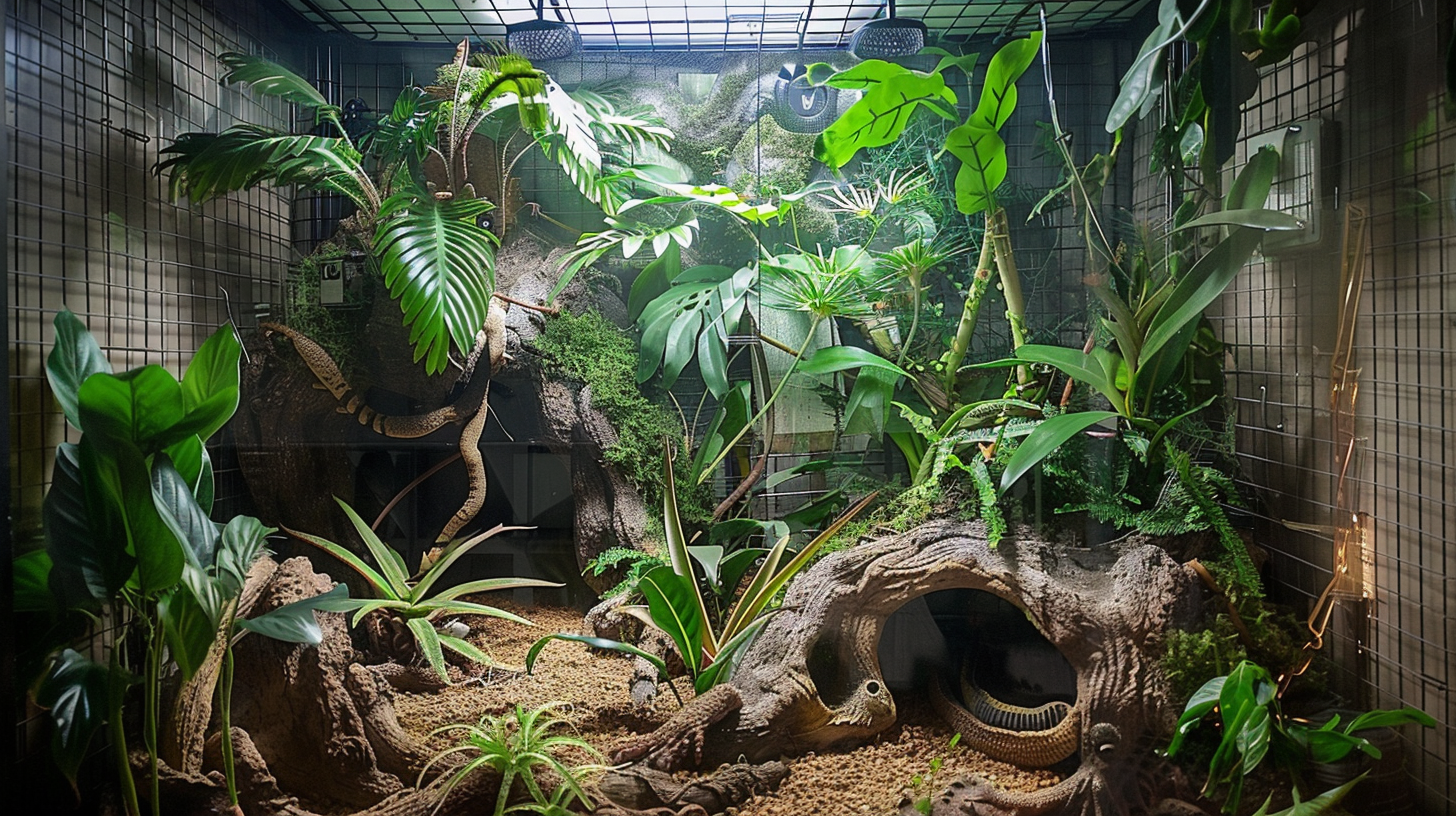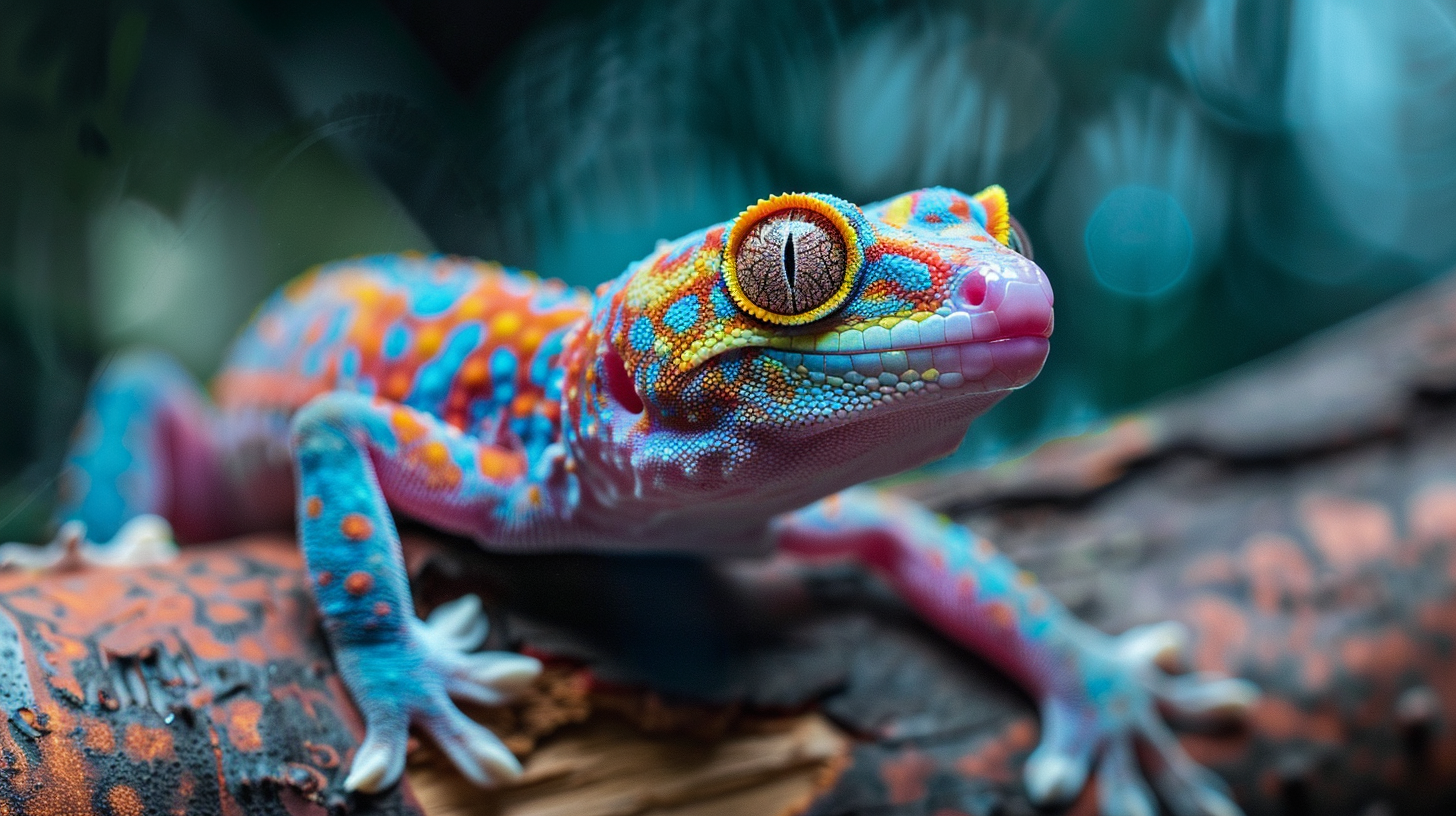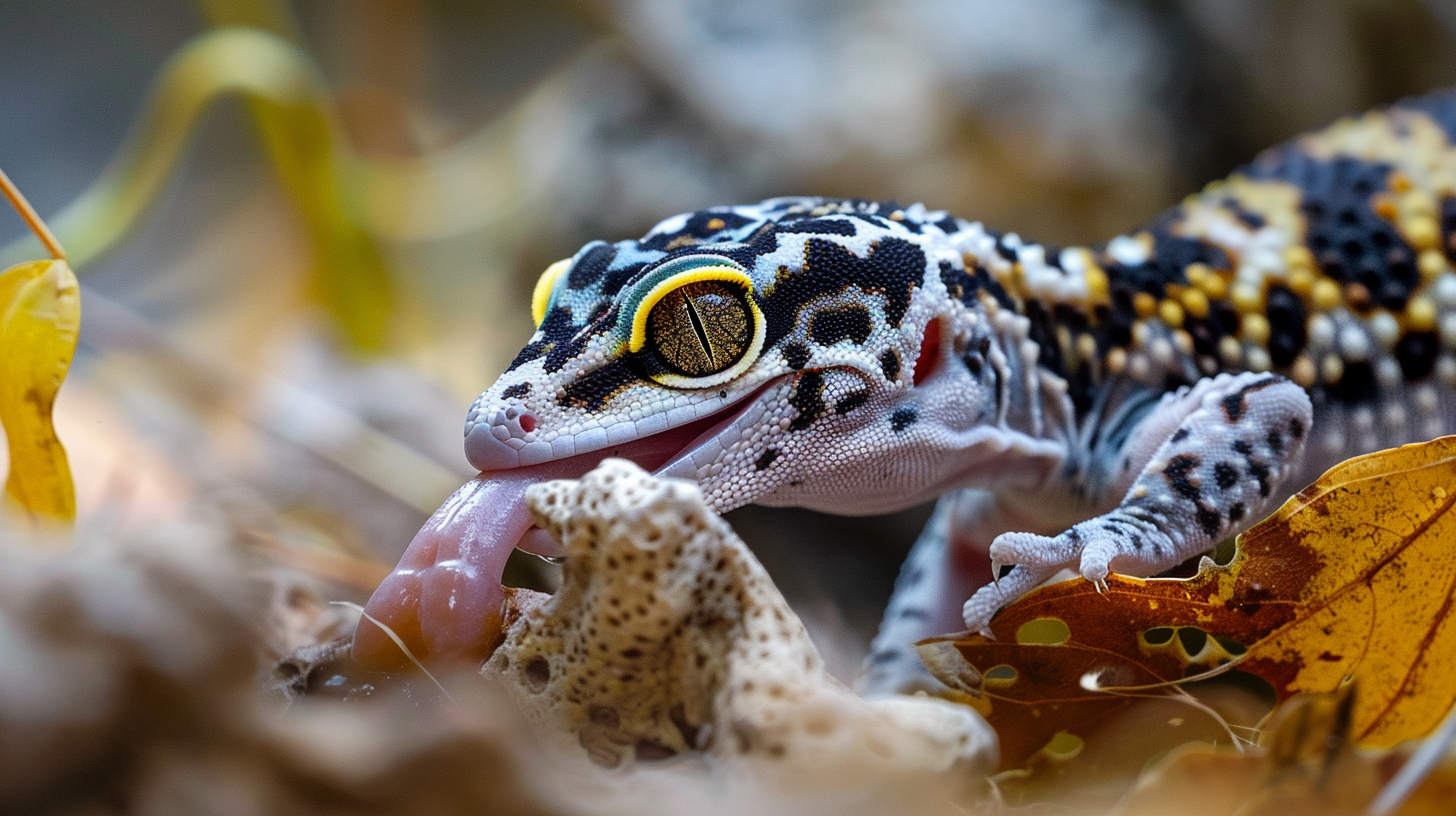Geckos are fascinating reptiles that make great pets for reptile enthusiasts. Their unique behaviors and relatively simple care requirements make them a popular choice among pet owners.
Popular Gecko Species
Several species of geckos are commonly kept as pets. Each species has its own unique care requirements and characteristics.
| Gecko Species | Size (inches) | Lifespan (years) | Difficulty Level |
|---|---|---|---|
| Leopard Gecko | 7-10 | 15-20 | Easy |
| Crested Gecko | 6-10 | 15-20 | Easy |
| Electric Blue Gecko | 3-4 | 5-10 | Intermediate |
| Giant Day Gecko | 7-12 | 6-8 | Intermediate |
| Fat-Tailed Gecko | 7-9 | 10-20 | Easy |
Leopard geckos are the most commonly kept lizard today. They can be housed in a group of just females or a single male with several females, but males should be avoided together due to aggressive behaviors. For more details on caring for specific species, check out our sections on Leopard Geckos and Crested Geckos.
Enclosure Considerations
Choosing the right enclosure for your gecko is crucial for their well-being. A proper habitat ensures that your gecko remains healthy and comfortable.
- Size: The size of the enclosure should match the gecko species. Larger species like the Giant Day Gecko require more space compared to smaller species like the Electric Blue Gecko.
- Material: Glass tanks are often recommended as they provide good visibility and are easy to clean (Talis-us). Plastic tanks and wooden terrariums can also be viable options, depending on your gecko’s needs.
- Ventilation: Proper airflow is essential to prevent mold and maintain a healthy environment. Ensure the enclosure has adequate ventilation.
- Temperature and Humidity Control: Different species have different requirements. For example, leopard geckos thrive in dry environments, while crested geckos prefer more humidity. Use thermometers and hygrometers to monitor these levels.
- Decorations and Hiding Spots: Providing hiding spots and decorations helps to mimic the gecko’s natural habitat. This can reduce stress and promote natural behaviors.
- Ease of Cleaning: A clean enclosure is vital for the health of your gecko. Choose materials and designs that are easy to clean and maintain.
| Enclosure Type | Pros | Cons |
|---|---|---|
| Glass Tank | Good visibility, easy to clean | Can be heavy |
| Plastic Tank | Lightweight, durable | May not provide good visibility |
| Wooden Terrarium | Aesthetic, customizable | May require more maintenance |
For more detailed information on setting up a gecko habitat, visit our gecko habitat setup page. By considering these factors, you can create a suitable environment that ensures your gecko’s health and happiness.
Health and Care
Proper health and care are essential for ensuring that your gecko thrives in captivity. This section addresses common health issues, housing multiple geckos, and feeding guidelines to help you provide the best care.
Common Health Issues
Geckos, like all pets, can suffer from various health problems. Some of the most common health issues include:
- Metabolic Bone Disease (MBD): Caused by calcium deficiency, leading to weak bones.
- Respiratory Infections: Often due to poor enclosure conditions.
- Parasites: Internal and external parasites can affect geckos.
Leopard geckos, in particular, are experts at hiding illness, making it crucial for pet owners to observe changes that may indicate sickness. Symptoms to watch for include:
- Lethargy
- Loss of appetite
- Weight loss
- Abnormal stool
Regular health check-ups and maintaining a clean enclosure can help prevent many of these issues. For more detailed guidance, visit our section on gecko pet care.
Housing Multiple Geckos
Housing multiple geckos in one enclosure can be challenging and requires careful consideration. Important factors include:
- Size and Space: Ensure the enclosure is large enough to accommodate multiple geckos. Overcrowding can lead to stress and aggression.
- Compatibility: Not all geckos are social; some species prefer solitary living. For example, male geckos should not be housed together as they can become territorial and aggressive.
- Health Monitoring: Regularly check for signs of bullying or stress, such as loss of appetite or injuries.
| Gecko Species | Group Housing Suitability |
|---|---|
| Leopard Gecko | Low (Males should be housed separately) |
| Crested Gecko | Medium (Females can be housed together) |
| Giant Day Gecko | Low (Prefer solitary living) |
For more information on setting up a gecko habitat, refer to our article on gecko habitat setup.
Feeding Guidelines
Proper nutrition is vital for your gecko’s health. Here are some feeding guidelines:
- Insect Size: Feed insects no larger than the space between the gecko’s eyes to prevent choking (Exotic Direct).
- Feeding Frequency: Juvenile geckos should be fed daily, while adults can be fed every other day.
- Variety: Offer a variety of insects such as crickets, mealworms, and dubia roaches.
Overfeeding can lead to obesity, which is a common issue in leopard geckos as they store fat in their tails (Exotic Direct). Obesity can result in health problems such as regurgitation and lethargy.
To ensure geckos receive essential vitamins and minerals, gut load the insects by feeding them nutritious food 12 hours before offering them to the gecko. Additionally, dust the insects with a vitamin, mineral, and amino acid complex.
| Feeding Guidelines | Details |
|---|---|
| Insect Size | No larger than the space between the eyes |
| Feeding Frequency | Juveniles: Daily, Adults: Every other day |
| Variety | Crickets, mealworms, dubia roaches |
| Nutrient Supplementation | Gut loading and dusting |
For more detailed feeding tips, visit our section on feeding geckos as pets.
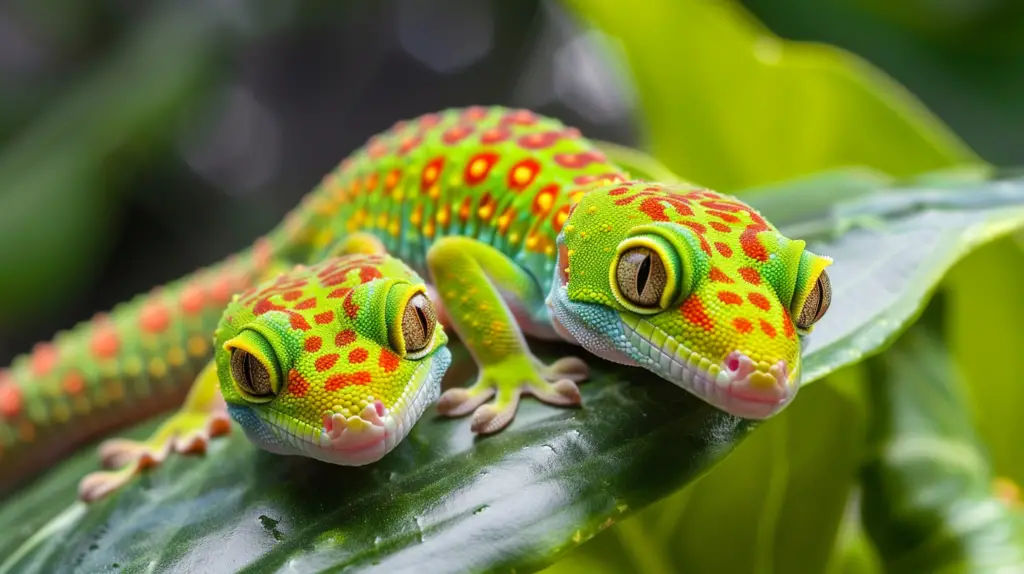
Leopard Geckos
Leopard geckos are one of the most popular types of geckos as pets, known for their ease of care, engaging personalities, and striking coloration. They originate from the arid regions of Pakistan and have adapted well to life in captivity.
Leopard Gecko Care
Leopard geckos are relatively low-maintenance pets. They have become adept at hiding illnesses, so owners need to be vigilant in observing any changes in behavior or appearance. Regular health checks, a clean environment, and proper diet are key to their well-being.
Important care guidelines:
- Maintain an ambient temperature of 75-85°F during the day, with a basking spot of 88-90°F.
- Use a heat mat or ceramic heat emitter to provide belly heat.
- Ensure a humidity level of 30-40%, with a humid hide for shedding.
- Provide a shallow water dish and change the water daily.
Leopard Gecko Enclosures
Leopard geckos are ground-dwelling and do not require elaborate climbing structures or tall tanks. This makes designing their enclosures straightforward and cost-effective (Terrarium Quest).
| Enclosure Feature | Description |
|---|---|
| Minimum Tank Size | 10 gallons |
| Ideal Tank Size | 20+ gallons |
| Tank Shape | Long and shallow |
| Substrate | Paper towels, reptile carpet, or tile |
| Hides | At least two (one on warm side, one on cool side) |
| Lighting | UVB light (optional but beneficial) |
For detailed information on setting up a leopard gecko habitat, visit our guide on gecko habitat setup.
Leopard Gecko Diet
Leopard geckos are insectivores and should be fed a diet consisting mainly of live insects. The size of the prey should not exceed the space between the gecko’s eyes to prevent choking hazards (Exotic Direct).
| Food Item | Frequency | Notes |
|---|---|---|
| Crickets | Daily | Gut-loaded and dusted with calcium powder |
| Mealworms | 2-3 times a week | Gut-loaded and dusted with vitamins |
| Waxworms | Treat | High in fat, feed sparingly |
| Dubia Roaches | Weekly | High in protein, good for variety |
For more detailed feeding guidelines, check our comprehensive guide on feeding geckos as pets.
Leopard geckos are beginner-friendly and make excellent pets for reptile enthusiasts of all experience levels. For those new to gecko pet care, check our articles on gecko handling and taming and other types of geckos as pets.
Crested Geckos
Crested geckos are favored among reptile enthusiasts due to their manageable care requirements and engaging personalities. Below, we delve into their care, enclosure needs, and diet.
Crested Gecko Care
Crested geckos are low-maintenance pets, making them suitable for novice lizard owners and homes with children. These geckos grow up to 7 to 9 inches on average and live for about 10-20 years with proper care (Pet Assure). Key aspects of their care include:
- Temperature and Humidity: Maintain a daytime temperature of 72-78°F and a nighttime drop to 65-70°F. Humidity levels should be kept between 50-70%.
- Handling: They are easy to handle but should be treated gently as they can lose their tails when stressed (Quora). Check out our guide on gecko handling and taming for more tips.
Crested Gecko Enclosures
A proper enclosure is vital for the health and happiness of crested geckos. Here’s what you need to know:
- Size: A 20-gallon terrarium is recommended, providing ample space for climbing and enrichment (Pet Assure).
- Setup: Include branches, plants, and hides to create a stimulating environment. Bio-active terrariums are gaining popularity.
- Lighting and Heating: While additional heating is often unnecessary, ensure the enclosure is well-ventilated and maintains appropriate temperature and humidity levels. Explore more on gecko habitat setup.
Crested Gecko Diet
Crested geckos are omnivorous/frugivorous, requiring a balanced diet to thrive. They typically consume approximately 50% insects and 50% fruit.
| Food Type | Examples | Frequency |
|---|---|---|
| Insects | Crickets, roaches | 2-3 times a week |
| Fruits | Pears, blueberries, bananas | 2-3 times a week |
| Commercial Diet | Mashed fresh fruits, powdered diets | Daily |
Their diet can include mashed fresh fruits and powdered semi-complete diets, mixed with water and served as a paste. For best practices and feeding schedules, consult a veterinarian. Visit our page on feeding geckos as pets for detailed guidelines.
Understanding these aspects of crested gecko care will help ensure that your pet thrives in its environment. For more comprehensive care advice, see our section on gecko pet care.
Other Gecko Species
Gecko enthusiasts have a variety of species to choose from when considering the best types of geckos as pets. Below, we explore the unique characteristics, care requirements, and habitat needs of Electric Blue Geckos, Giant Day Geckos, and Fat-Tailed Geckos.
Electric Blue Geckos
Electric Blue Geckos (Lygodactylus williamsi) are named for their vibrant blue coloration, making them a visually stunning addition to any reptile collection. These geckos are relatively small, typically measuring between 2.5 to 3.5 inches in length.
Care Requirements:
- Enclosure: Electric Blue Geckos require a large enclosure to accommodate their need for running and climbing. A vertically oriented terrarium is ideal.
- Temperature: Specific temperature requirements include a basking spot of around 90°F and a general ambient temperature between 75°F and 80°F.
- Humidity: Maintain a humidity level between 60-80%.
Giant Day Geckos
Giant Day Geckos (Phelsuma grandis) are one of the larger gecko species, reaching up to one foot in length. They are known for their bright green coloration and vibrant red markings. These geckos thrive best in pairs, and it is noteworthy that a male and female may bond for life (Pet Assure).
Care Requirements:
- Enclosure: A spacious, vertically oriented terrarium with plenty of vegetation and climbing structures.
- Temperature: Ideal temperature range includes a basking spot of 90-95°F and an ambient temperature of 75-80°F.
- Humidity: Maintain humidity levels between 60-80%.
Fat-Tailed Geckos
Fat-Tailed Geckos (Hemitheconyx caudicinctus) are an excellent choice for beginners due to their friendly nature and manageable care requirements. They are known for their ability to drop their tail when threatened, a defense mechanism shared with Leopard Geckos.
Care Requirements:
- Enclosure: A 10 to 20-gallon aquarium is sufficient, with multiple hides, including a humid hide and a dry hide.
- Temperature: Maintain an ambient temperature of 75-85°F, with a basking spot of around 90°F.
- Humidity: Provide a humidity level of 50-60%.
| Gecko Species | Size (inches) | Enclosure Type | Temperature (°F) | Humidity (%) |
|---|---|---|---|---|
| Electric Blue Gecko | 2.5 – 3.5 | Vertical terrarium | Basking: 90, Ambient: 75-80 | 60-80 |
| Giant Day Gecko | Up to 12 | Vertical terrarium | Basking: 90-95, Ambient: 75-80 | 60-80 |
| Fat-Tailed Gecko | 7 – 9 | 10-20 gallon aquarium | Basking: 90, Ambient: 75-85 | 50-60 |
For more detailed information on gecko pet care, including habitat setup and feeding guidelines, explore our comprehensive guides. Whether you’re a novice or an experienced reptile keeper, these species offer unique and rewarding experiences for any enthusiast.
Beginner-Friendly Geckos
Recommended Beginner Geckos
For those new to reptile petkeeping, selecting a beginner-friendly gecko species can make the experience more enjoyable and less daunting. Here are some of the best types of geckos as pets for beginners:
Leopard Geckos
Leopard geckos are one of the most commonly kept ground-dwelling geckos in the reptile industry. Originating from dry areas of Pakistan, they are known for their ease of care, personality, and gorgeous coloration. They can be housed in a group of females or a single male with several females, but males should be avoided together due to aggressive behaviors.
| Aspect | Leopard Gecko |
|---|---|
| Size | 7-10 inches |
| Enclosure | 10-20 gallons |
| Temperament | Docile, friendly |
| Care Level | Easy |
Crested Geckos
Crested geckos are low-maintenance pets suitable for novice lizard owners and homes with children. They grow up to 7 to 9 inches on average and require a 20-gallon terrarium with room to climb and various items for enrichment (Pet Assure).
| Aspect | Crested Gecko |
|---|---|
| Size | 7-9 inches |
| Enclosure | 20 gallons |
| Temperament | Gentle, easy-going |
| Care Level | Easy |
Fat-Tailed Geckos
Fat-tailed geckos are friendly and great for beginners. They require a 10 to 20-gallon aquarium with multiple hides, including a humid hide and a dry hide. Fat-tailed geckos have the ability to drop their tail when threatened (Pet Assure).
| Aspect | Fat-Tailed Gecko |
|---|---|
| Size | 8-10 inches |
| Enclosure | 10-20 gallons |
| Temperament | Calm, gentle |
| Care Level | Easy |
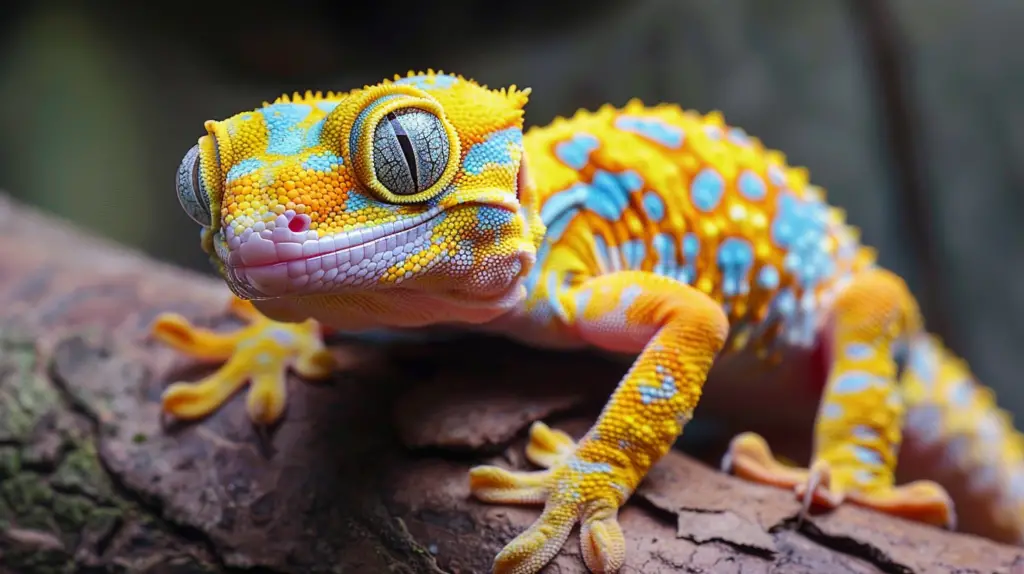
Handling and Care Advice
Proper handling and care are essential for ensuring the health and well-being of your geckos. Here are some tips:
Handling Tips
- Gentle Approach: Always approach your gecko slowly and gently to avoid startling it.
- Support Body: Use both hands to support its body, ensuring you don’t grasp it too tightly.
- Avoid Tail Grabbing: Never grab a gecko by its tail, as some species can drop their tails as a defense mechanism.
For more detailed advice on handling your gecko, visit our gecko handling and taming guide.
Care Tips
- Temperature and Humidity: Keep the enclosure at the appropriate temperature and humidity levels for the specific gecko species. Use a thermometer and hygrometer to monitor these conditions.
- Hides and Enrichment: Provide multiple hides and enrichment items to keep your gecko comfortable and stimulated.
- Diet: Follow feeding guidelines specific to the species, ensuring a balanced diet. For more information, check our article on feeding geckos as pets.
For more comprehensive care tips, refer to our gecko pet care and gecko habitat setup articles.
